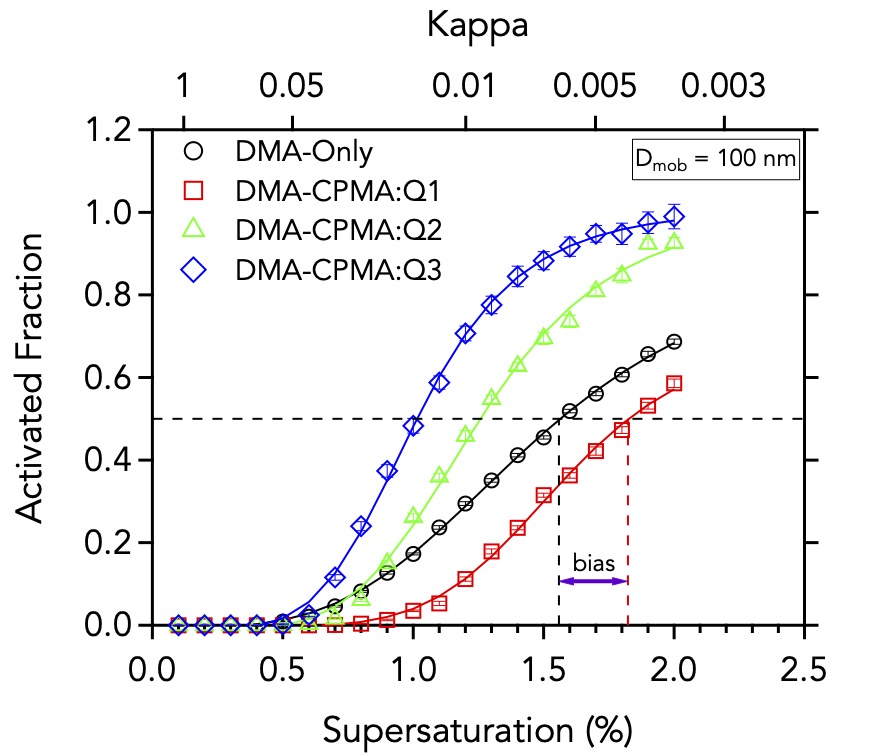Understanding measurement uncertainties in black carbon-water interactions
Submitter
Enekwizu, Ogochukwu Yvonne — Brookhaven National Laboratory
Sedlacek, Arthur J — Brookhaven National Laboratory
Area of research
Aerosol Properties
Journal Reference
Science
Accurate measurements of cloud activation properties and hygroscopicity of black carbon (BC) particles are particularly important because of their positive climate forcing. Biases in cloud activation properties and hygroscopicity caused by the presence of larger, multiply charged particles are resolved using the combination of an electrical mobility (DMA) and mass (CPMA) system to select only singly charged particles.
Impact
Our research highlights the advantage of the DMA-CPMA system over the commonly used single DMA system in reducing errors in measurements of CCN activation and hygroscopicity introduced by multiply charged particles. We also introduce the concept of morphology dispersion – variability in aerosol properties resulting from different shapes of particles with the same electrical mobility and mass – and its influence on the multiple charging effects of surrogate BC particles with aggregate morphology.
Summary
Measurements of cloud condensation nuclei (CCN) activity and hygroscopicity of black carbon are typically conducted on particles selected by a differential mobility analyzer (DMA), which also transmits larger, multiply charged particles (Q2s, Q3s, and higher) that have the same electrical mobility as smaller, singly charged particles (Q1s). These larger particles activate at lower supersaturations than the singly charged particles, biasing measurements and resulting in overestimation of CCN activity and hygroscopicity parameter (κ). To reduce errors caused by these multiply charged particles, we employed a centrifugal particle mass analyzer (CPMA) in tandem with a DMA to select only singly charged particles for three commonly used BC surrogates: nigrosin, Regal Black, and fullerene soot. The contribution of the multiply charged particles to the measured activation profiles depended on the underlying incoming particle size distribution, the selected electrical mobility diameter, and the type of the BC surrogate. The morphology dispersion was greatest for fullerene soot, which has a branched aggregate structure. Our findings demonstrate that using the DMA system alone is unlikely to lead to accurate results in measurements of CCN activation and hygroscopicity of BC particles.



